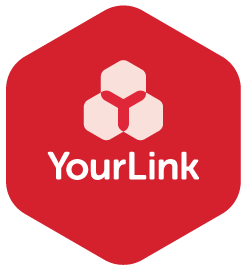What is this thing called digital confidence?
It’s interesting the terms we frequently use commonly and just assume that everyone knows what they mean.
We’re wondering if ‘digital confidence’ is one of those terms?
So we thought it would be interesting to explore. We’re using the experience of the 5,000 seniors, carers and care workers we’ve trained over the past couple of years to explore what we’ve heard digital confidence meant to them.
Before we dive into the stories - let’s talk about why YourLink chose Digital Confidence as the term we’d use to describe the impact we have with those we train. Our approach to learning is based on the old adage, “give a man a fish, and you feed him for a day. Teach a man to fish and you feed him for a lifetime”. Our objective is to enable those we train to use their devices in whatever way works for them so that it becomes part of their life. That means we combine a focus on specific processes and also ‘about’ the device itself - how it works, what each of the functions can do for them and how they can apply them.
For many people, one of the key barriers to learning is fear - not just for using the device itself, but of the consequences if they ‘get something wrong’. Media and the news doesn’t help here. It reinforces the messages around security and scams, even more unsettling for the vulnerable in our communities. These messages are amplified when you add in unfamiliar technology. There is also an anxiety around learning and looking silly or making mistakes in front of others.
Where does confidence come from?
We have designed our programs to gradually build confidence for our participants. For those getting new devices, we find a Welcome session with one of our empathetic and knowledgeable digital coaches is a great starting point. They take the time to make sure each person has their device and is comfortable to join a Zoom meeting for the actual training (if it’s virtual) or is ready for the face to face session. The other benefit of the Welcome session is to find the personal motivation for the person. This means they can really engage around that content in the actual learning sessions - creating a strong connection between them and their device.
Taking the first step
One of our 87 year old participants couldn’t have said it better. After nearly 30 minutes of working through the welcome session she said, “I am going to take charge of this thing now”. She went on, “I kept putting this call off because I didn’t want to be embarrassed by what I didn’t know, but you’ve helped me to take that first step”.
It’s really inspiring for our digital coaches as well. Once the training sessions are over and we get feedback, participants often refer to the Welcome sessions as being a valued start to their journey.
Our training is designed to build confidence … step by step
The science of learning is well-researched. We know the outcome we’re aiming for is digital confidence and independence of our participants. So, we use intentional design to take our participants on a journey. That means we meet them where they are in terms of knowledge about their devices and then go from there.
The ultimate outcome is that each participant can be more competent to problem solve for themselves with their devices - if something doesn’t work the first time, they have a better understanding of the options they have available. The frustration we have often heard from participants about relying on family and friends for help is managed by their confidence to do it themselves.
In a workshop where we had 25 care workers in the room all learning, it was great to see them helping each other when something didn’t make sense or didn’t work. That is digital confidence, not only being able to problem solve for yourself but to help someone else.
The motorbike bond
One participant in a workshop talked about missing his son who had recently moved to the Central Coast. They used to work on bikes together and now that was not possible .. or was it? Our client, bolstered with digital confidence, suggested to his son that he could FaceTime with the son when he was working on the bike and they could chat as he was working. “Next best thing to being in the garage with him” said our bike enthusiast.
From 0 to 1 is how we describe the beginning part of the journey for some participants. It’s about establishing the basics, as we said earlier, the functions of the device as the foundations for future use. At the heart of this is creating a learning environment that is respectful and supportive and our participants have fun as we go. Growing in confidence as they learn.
Checking back into life
One of the most heartfelt stories we heard from one of our digital coaches recently was about an 80 year old woman who had recently lost her husband of over 50 years. “I realise I had been isolating myself and had dropped out of life”, she said in our call with her. Having done a program of 5 training sessions and feeling digitally confident, she was sharing how she had started having Zoom calls with friends, listening to classical music online, following her favourite gardening tips and setting up social events. “I am feeling so much more connected again, thank you - you’ve changed my life” was how she described it.
An important reminder of why digital confidence is the key. We now know this comes from the combination of the role of our digital coaches from the beginning of their journey. Walking alongside them. This removes barriers to learning and connects them with empathetic training. The careful design of our training programs is to meet participants where they are and it is the passion, respect and expertise that achieves the outcome.
You can imagine how the YourLink team felt when they heard the checking back into their life story - not a dry eye in the house as they say. But a fantastic reminder of why YourLink exists and why we continue to build the digital confidence of seniors, carers and care workers!
Contact Richard Scenna, email richard@yourlink.com.au or phone 0408 742 743.
Looking for more articles to read?
Discover more tips and advice to get online, insights, news and case studies.
Are there are any articles or tips you’re like us to write?
Please email us or add a comment below.



